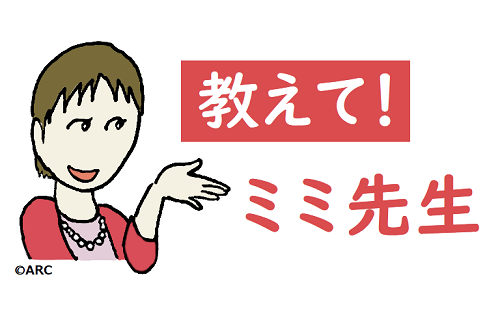– Vol.5 –
ARC teacher Mimi Sensei will answer your questions regarding Japanese language.

A:
It’s so common to get confused by these. 「kore」「sore」「are」in English mean “this” and “that”. It can be easy to understand if we are talking about things, physical objects. Use “KORE” when the object is near the speaker, “SORE” if the object is close to the listener, and “ARE” if both the speaker and the listener are far from the thing.

It might become more complicated when we talk about people, places, or things that aren’t there. For example, when you talk about famous places and people in your country.
Situation 1: Mr.A knows it, but Mr.B does not.
A:Watashi no kuni de ninki ga aru tabemono ha sagosu desu.
B:Sagosu?Sagosu ha nandesuka?
A:SORE ha, gyuniku to retasu no sandoicchi desu.
B:Hee~。
A: A popular food in my country is Sago.
B: Sago? What is that?
A: It is a sandwich made of beef and lettuce.
B: Oh, I see.
Situation 2: Both Mr.A and Mr.B knows about the subject
B:Senshu, sagosu wo tabemashita. Oishikattadesu.
A:Soudesuka! Are ha, oishiidesuyone!
B: I had Sago for dinner last week. It was delicious.
A: Yes right?! That is delicious!
If we are talking about something that everyone knows for sure, then you can use “ASOKO ha”, “ARE ha”, and “ANO hito ha”, but if you are not certain, for example that thing is famous in your own country, but you wonder how it would be in other nation, then use “SOKO ha”, “SORE ha”, and “SONO hito ha”.
It can take time for you before it becomes simple, try practicing with the self-introduction first. When you refer to something in your country, hometown, or friends, pay attention in particular on how to use the pronouns THIS and THAT, “SO” and “A”.

